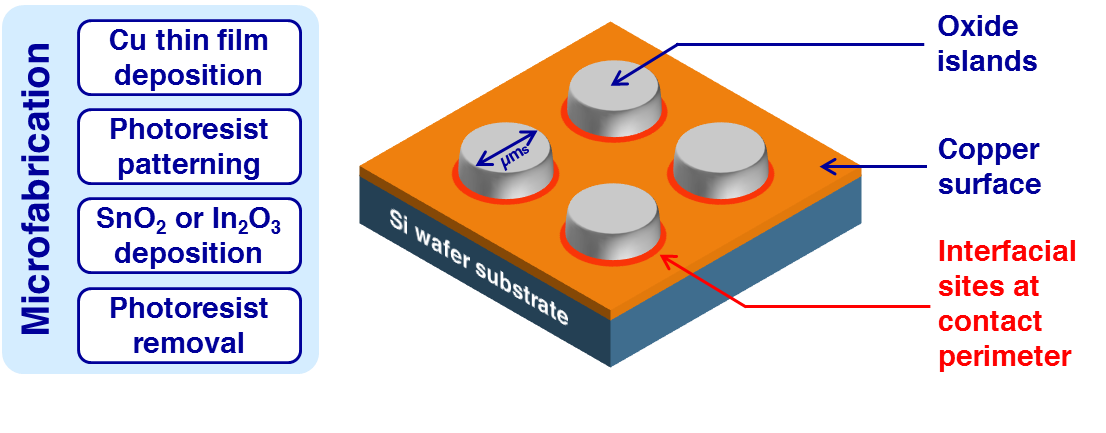Magic at the interface: model multicomponent electrodes with controlled interfacial geometry for the electrocatalytic reduction of CO2
Combining the electrochemical reduction of CO2 (eCO2RR) with carbon-neutral energy sources is a potentially sustainable strategy for recycling carbon emissions. In particular, reducing CO2 to CO would provide a versatile building block for the production of liquid fuels and plastics by well-established processes in industry. However, the application of this reaction requires the development of more efficient electrocatalysts.1 Cu-In and Cu-Sn catalysts have shown high selectivity for CO evolution at moderate overpotentials, but their further development requires the rationalization of the synergistic effect observed in these multicomponent systems. Oxidic species that are stable under reaction conditions are crucial to the eCO2RR over bulk In and Sn electrodes,2,3 and recent findings indicate that the presence of In(OH)3 plays a pivotal role in maintaining a high selectivity for CO over Cu-In catalysts.4 Consequently, we hypothesize that bifunctional sites located at the interfaces between Cu surfaces and In and Sn (hydr)oxides are particularly favorable for CO evolution. In this context, we have developed a photolithography-based microfabrication process for creating model electrodes with controlled oxide-on-metal interfaces (Figure 1). By establishing quantitative relationships between the geometry and the CO evolution activity of the model electrodes, with further support from surface analytical techniques including operando studies, we aim to unveil the role of interfacial sites in the reduction of CO2 to CO and to develop new descriptors for the rational optimization of this family of multicomponent catalysts.

Figure 1 Main process steps for the fabrication of microstructured multicomponent model electrodes and a schematic representation of the resulting geometry. Interfacial sites are located at the contact perimeters between the circular oxide islands and the underlying smooth metal surface.
[1] A.J. Martín, G.O. Larrazábal, J. Pérez-Ramírez, Green Chem. 2015, 17, 5114.
[2] A. Dutta, A. Kuzume, M. Ramahan, S. Vesztergom, P. Broekmann, ACS Catal. 2015, 5, 7498.
[3] Z.M. Detweiler, J.L. White, S.L. Bernasek, A.B. Bocarsly, Langmuir 2014, 30, 7593.
[4] G.O. Larrazábal, A.J. Martín, S. Mitchell, R. Hauert, J. Pérez-Ramírez, ACS Catal. 2016, 6, 6265.